#plant medicine
Text
Herbalism book reccomendations 📚🌿
General herbalism:
The Herbal Medicine-Maker's Handbook by Green J. (2011)
20,000 Secrets of Tea: The Most Effective Ways to Benefit from Nature's Healing Herbs by Zak V. (1999)
The Modern Herbal Dispensatory: A Medicine-Making Guid by Easly T. (2016)
A-Z Guide to Drug-Herb-Vitamin Interactions by Gaby A.R.
American Herbal Products Association's Botanical Safety Handbook (2013)
Medical Herbalism: The Science and Practice of Herbal Medicine by Hoffman D. (2003)
Herbal Medicine for Beginners: Your Guide to Healing Common Ailments with 35 Medicinal Herbs by Swift K & Midura R (2018)
Today's Herbal Health: The Essential Reference Guide by Tenney L. (1983)
Today's Herbal Health for Women: The Modern Woman's Natural Health Guide by Tenney L (1996)
Today's Herbal Health for Children: A Comprehensive Guide to Understanding Nutrition and Herbal Medicine for Children by Tenney L. (1996)
For my black folks!!!
African Medicine: A Complete Guide to Yoruba Healing Science and African Herbal Remedies by Sawandi T.M. (2017)
Handbook of African Medicinal Plants by Iwu M.M. (1993)
Working The Roots: Over 400 Years of Traditional African American Healing by Lee M.E. (2017)
Hoodoo Medicine: Gullah Herbal Remedies by Mitchell F. (2011)
African American Slave Medicine: Herbal and non-Herbal Treatments by Covey H.C. (2008)
The Art & Practice of Spiritual Herbalism: Transform, Heal, and Remember with the Power of Plants and Ancestral Medicine by Rose K.M. (2022)
Indigenous authors & perspectives!!
Braiding Sweetgrass: Indigenous Wisdom, Scientific Knowledge and the Teachings of Plants by Kimmerer R.W. (2015)
Gathering moss by Kimmerer R.W. (2003)
The Plants Have So Much To Give All We Have To Do Is Ask by Siisip Geniusz M. (2005)
Our Knowledge Is Not Primitive: Decolonizing Botanical Anishinaabe Teachings by Djinn Geniusz W. (2009)
Ancient Pathways, Ancestral Knowledge: ethnobotany and ecological wisdom of indigenous peoples of northwestern North America by Turner N. (2014)
A Taste of Heritage: Crow Indian Recipes and Herbal Medicines by Hogan Snell A. (2006)
Medicines to Help Us by Belcourt C. (2007)
After the First Full Moon in April: A Sourcebook of Herbal Medicine from a California Indian Elder by Grant Peters J. (2010)
Latin american herbalism works!!
Earth Medicines: Ancestral Wisdom, Healing Recipes, and Wellness Rituals from a Curandera by Cocotzin Ruiz F. (2021)
Hierbas y plantas curativas by Chiti J.F. (2015)
Del cuerpo a las raíces by San Martín P.P., Cheuquelaf I. & Cerpa C. (2011)
Manual introductorio a la Ginecología Natural by San Martín P.P.
🌿This is what I have for now but I’ll update the post as I find and read new works, so keep coming if you wanna check for updates. Thank you for reading 🌿
#herbalism#herbal medicine#herbal health#green witch#green witchcraft#green magic#herbal magic#herbal witch#herbal witchcraft#plant medicine#plant magic#plant witch#folk healer#healing witch#healing magic#curanderismo#yerbera#curandera#rootwork#rootworker
2K notes
·
View notes
Text
I’m so very sick of plant blindness in conservation, and in the wider world in general
If you buy or ‘wildharvest’ an endangered, threatened, or protected plant, you are a trophy hunter.
It doesn’t matter if it’s for spiritual reasons. It doesn’t matter if it’s already been harvested. You are bankrolling the destruction of a species. You are contributing to the growing demand.
The loss of any plant species can cause a trophic cascade, a having a devastating impact on the ecosystem it was a part of.
#witchblr#plant medicine#herbal medicine#herbalism#green witch#botany#herbal witch#herbal wellness#herbal witchcraft#plant magic
312 notes
·
View notes
Text
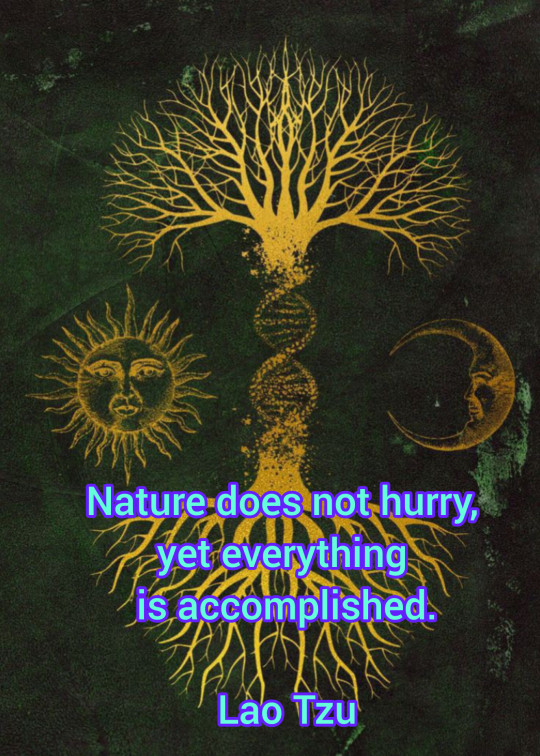
#taoism#tao te ching#tao#lao tzu#ayahuasca#plant medicine#psychoactive substances#consciousness#amazonia#enthogenics#vision#shaman#shamanism#spirituality
240 notes
·
View notes
Text
I knew people use cayenne pepper to season food and drank the "master cleanse" with the herb in it, but I often forget that cayenne pepper helps with circulation and apparently it can help stop bleeding! Who knew! I only knew of raw honey being safe to put on cuts but now we've got another one!
Ah, the healing power of herbs.
#food#vegan#foodie#healthy#health#vegetarian#fitness#diet#nutrition#plant based#herb#herbalism#herbal medicine#plants#plant medicine#tiktok#short video#medicinal herbs#herbsforhealth#plants and herbs#healing herbs#cayenne pepper#fortheloveofnutrition
317 notes
·
View notes
Text
🌿💗🍯
@hausfaerie (18+nsfw)


#sesh with me#medical marijuana#plant medicine#marijuana#cannabis#weed#420#bong#bong hits#stoner#stoner babe#personal#digital diary#diaryposting#online journal#personal post#journal#silly goofy mood
149 notes
·
View notes
Text
I’m reading Robin Wall Kimmerer’s Braiding Sweetgrass at the moment and wow, I’ve cried every chapter so far. The way she nurtures her deep generational pain and turns it into love and wisdom is just awe-inspiring. A lesson we could all learn from
#braiding sweetgrass#hopepunk#solarpunk#environmentalism#social justice#cottagepunk#climate justice#bright future#community#optimism#robin wall kimmerer#indigenous wisdom#plant medicine#potawatomi#the honourable harvest#wiingaashk
133 notes
·
View notes
Text
The Mistreatment of a Sacred Plant
Recently, I had an unpleasant emotional and spiritual shock. I struggle a bit to talk about it because of how upset it makes me, but I feel like the subject matter is important enough to warrant the discussion.
As some may know, one of my dearest plant allies is the Ghost Pipe. I work closely with Monotropes in general, but the Tutelary Spirit of Monotropa Uniflora, in particular, serves as a chief Plant Patron of mine. Part of maintaining this relationship involves visiting a specific location in a devotional capacity, in order to watch, tend, and learn from the population of Ghost Pipes that grow there. I went back to this place not long ago, in order to thank the spectral flowers for lending their power and grace to our Handfasting Ritual, and I was horrified to discover that every one of the colonies I've stewarded over the last few years is completely gone.
They aren't a major food-source for any animals I know of, and this was way more than a die-back, since I recognize what that looks like. What's more, for every colony to have naturally vanished without a trace since the last time I visited was unthinkable. As such, I'm all but sure that someone "Wildcrafted" them to make tinctures for sale. This is absolutely heartbreaking and infuriating, as they have totally misused and abused this sacred plant, and damaged an extremely fragile and unique ecosystem in the process.
The main issue with harvesting Ghost Pipes isn't necessarily that it's rare, though it is in some areas. The real problems are how sensitive they are and how exacting their life cycle is. Sometimes, just touching a Ghost Pipe is enough to damage the plant, disrupt the re-seeding process, and prevent it from growing back. What's worse, the conditions required for the succesful development of these ethereal organisms are extremely specific. Monotropes are Mycoheterotrophs, which derive their energy through mychorizal parasitism. This is to say, they can only get their energy by siphoning it from a small range of subterranean fungi, who in turn, siphon their energy from the roots of certain trees. Between these and other factors, Monotropes are virtually impossible to cultivate or propagate, and they are especially susceptible to the effects of overharvesting. Unfortunately, unethical harvesting has steadily become a real problem in Western Herbalism, where Ghost Pipe tincture is growing in popularity for its mystique and its beautiful violet color. And while it does have a long history of traditional medicinal use as a Nervine, people who aren't getting it purely for its aesthetic qualities are buying it as a miracle cure, without any real understanding of how or why to use it.
I've been muddling through strong feelings of anger, sorrow, and impotence since this happened, and I feel sick thinking about someone out there irreverently peddling this precious medicine under a capitalist guise of "Herbal Wisdom." These sorts of business practices are thoughtless, ecologically unethical, and spiritually blasphemous (as far as I'm concerned). So, I beg you: please think thrice about what you are doing before you harvest a plant. Ask yourself these five questions, and weigh the answers against each other: "Why do I want to harvest this plant?' 'What harm will my behavior cause to this organism?' 'What harm will my behavior cause to this species?' 'What harm will my behavior cause to this ecosystem?' and, 'What will I suffer as a result of not harvesting this plant?
I offer up my most fervent prayers that the seeds I helped to spread earlier in the year will count for something.

#ghost pipes#ghost pipe#monotropes#monotropa#monotropa uniflora#foraging#harvesting#harvest#herbalism#plant magic#plant medicine#nature magic#herbal medicine
128 notes
·
View notes
Text
Herbalism in Times of Turmoil
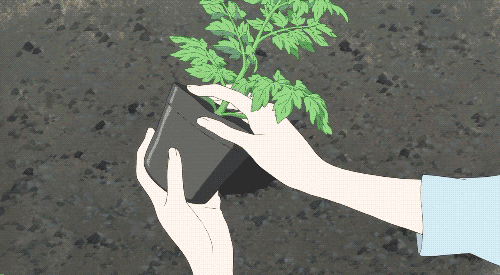
I've recently returned to my roots (pun intended) in folk herbalism to supplement the work I'm doing with my therapist. It wasn't an intentional thing -- in our current round of EMDR, we've uncovered some deeply buried trauma, and bringing that trauma to the surface has shaken the foundations of how I see myself and the world around me. I feel very raw and vulnerable. I feel disoriented and fragile.
I find myself drawn to plant medicine as I navigate this trauma with the help of my therapist. I think a part of me longs for the sympathetic magic of plants -- by taking them into my body, maybe I, too, can become firmly rooted, supported by the earth and nourished by the sun. Maybe I can relearn the magics of stillness and connection. Maybe I can reintegrate into the earth's cycles of death and rebirth.
Some of the plants I'm partnering with in this work are old friends. Others are new allies, recommended by professional herbalists for the type of trauma I'm processing. All of them are supportive in different ways, and all of them have important lessons.
Obviously, I am working with herbs as a compliment to the work I'm doing with a professional mental health counselor, not as a replacement for medical/psychological care. I recommend you do the same, especially if dealing with complex trauma. Even if money is tight, you may be able to get free or low-cost counseling through local social services, nonprofits, university hospitals, etc.
How I Work with Herbs
As an animist, I see working with herbs both as physical medicine and as a working relationship with the spirit of the plant. I don't like to say that I "use" herbs, because that implies that they are just tools. When I say I "work with" an herb, what I mean is that I am partnering with that plant as a living, thinking being that has kindly chosen to support my healing process. I try to honor that relationship in every part of my herbalist craft.
One way I do this is by verbally thanking the plants that I consume as medicine. If I'm drinking a cup of linden tea, I'll say something like, "Thank you, linden, for aiding in my healing today."
I try to use herbal preparations that allow for a sensory experience to help me connect with the plant spirit(s). I don't like taking capsules full of powdered herbs, because that doesn't allow me to see, touch, smell, or taste the plant. I like teas because they allow for a much more intimate connection with the plant's spirit, and I use tinctures when I feel like I need more concentrated medicinal compounds.
I'm a witch who loves plants, but when I'm working with herbs internally, I do not choose them based on their magical or spiritual correspondences. When choosing herbs, I look for quality scientific studies that prove their medicinal benefits, but honestly a lot of plant medicine hasn't been sufficiently studied yet. Because of this, I also look at the way plants are viewed in traditional healing modalities like Western herbalism, Ayurveda, Traditional Chinese Medicine, etc.
While I don't pick them based on their magical properties, I do think studying how these plants are used in magical practices can add an extra layer to my work with them. This helps me to have a more nuanced, deep, and complex relationship with the plant's spirit.
And of course, I always research contraindications and drug interactions before using an herb. For example, I don't recommend Saint John's Wort to anyone taking any kind of pharmaceutical medication because it really messes with the way your body processes your meds. It's also important to research how herbs might interact with other herbs and supplements you're already taking -- that's also a type of drug interaction!
I also try to remember that when we're moving through grief or processing trauma, this changes the way herbs (and drugs, for that matter) affect our bodies. I highly recommend the book The Trauma-Informed Herbalist by Elizabeth Guthrie to learn more about this.
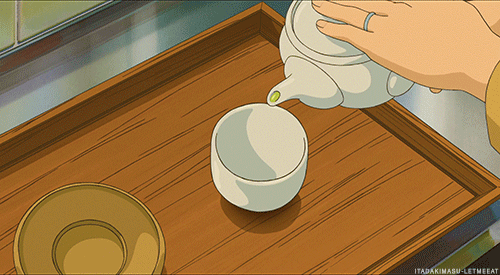
My Herbal Allies
These are the herbs I'm taking focusing my practice on right now:
Ashwagandha and Tulsi are two plant friends that I love pairing together. They're both adaptogens, meaning they can help manage the body's stress response, and come to Western herbalism by way of Ayurveda. I've been working with both of these plants for years, and although they do have different uses, I think they work really well together.
Ashwagandha is really helpful as a pick-me-up for the endocrine system (the system that produces hormones) and nervous system. I find that it has a very grounding effect and is especially helpful for when I feel overwhelmed or burned out. It's a great ally for building resilience when you feel like there's just way too much going on and have no idea how you're going to handle it all. It has a very bitter taste, so I usually add it to coffee or another very bitter beverage.
Tulsi, also called Holy Basil, is a lot more gentle and laid-back than ashwagandha, at least in my experience. It's one of my go-to herbs when I need emotional support. According to herbalists Katja Swift and Ryn Midura, "Tulsi has traditionally been the herb of choice for 'stuck emotions,' whether that's depression or PTSD or just a case of the grumpies." It has a delicious taste somewhere between basil and mint, and I love preparing it as a hot tea. This is one of my favorite herbs right now.
In Ayurveda, ashwagandha is classified as a Rasayana, which means it rejuvenates the body and can promote long life. It is also a Bhalya, meaning it promotes strength, and a Vajikara, which means it promotes healthy sexuality. Tulsi is one of the most valued herbs in Ayurveda and is even called the most sacred plant on earth in the Vedic Puranas. It increases sattva (light, clarity), uplifts the spirit, promotes joy and harmony, and increases prana (vital energy; similar to the concept of chi in China). They're sometimes used together because they're believed to support each other and enhance each other's effects.
I add ashwagandha and tulsi tinctures to my morning coffee and to other hot beverages throughout the day. I also really like tulsi as a tea, and tulsi tea is one of my go-to tools for replenishing my energy after a long day of tarot readings. That being said, I'm considering changing the way I consume these herbs to be more in line with traditional Ayurvedic practices, but I need to do more research first.
Cannabis is, honestly, one of my personal miracle workers, which is a little bit ironic because I also think it's waaaaay overhyped in the wellness industry right now. Cannabis is not a cure-all, and it is not recommended for everyone. There are several different types of cannabis, and each type has its own medicinal uses. For example, the cannabis I use in my personal practice is hemp, which is legally defined as cannabis with little to no THC, meaning it does not produce a high. Marijuana, the type of cannabis with THC, is powerful medicine for some people, but because of how my body and brain work, I personally don't use it. While marijuana use may be illegal depending on where you live, hemp is legal in most places.
I started working with cannabis several years ago to help manage anxiety and insomnia, but nowadays I mostly work with it to help with inflammation and chronic pain.
I find that my body really holds on to trauma in the form of tension, inflammation, and chronic pain. When my trauma response is triggered, I usually feel it as tension or pain, especially in my hips, pelvis, and lower back. I find cannabis really helpful for that stored trauma. It doesn't make the pain go away, but it helps me feel into it and navigate through it. I also find cannabis is really good at relaxing my body and helping me let go of that stored up trauma, almost like unclenching a fist.
Cannabis was historically used throughout the ancient world for divination and religious ritual. It's associated with connection to the spirit world, and may have been used in magical practices like the Norse practice of seidr. Scott Cunningham says hemp is associated with love spells and with Midsummer.
My favorite way to work with cannabis is with a cannibidiol (CBD) isolates. Since I live in a place where THC is illegal and have some health conditions that don't play well with THC, I like CBD isolates because I'm able to make sure I'm getting a THC-free product. I add CBD to my coffee along with tulsi and ashwagandha, and I feel like it helps me process the caffeine better. I also notice rapid relief for joint and nerve pain, anxiety, and intrusive thoughts after drinking this brew.
Meadowsweet is a new plant friend for me. I actually first came across meadowsweet when I was researching handfasting herbs -- it's a traditional inclusion in British handfasting and wedding ceremonies, and was historically used as a "strewing herb," which means it was sprinkled on the ground. It's also a traditional flavor in mead, and in fact the name "meadowsweet" comes from its traditional use in mead-making. (I actually have a batch of meadowsweet mead fermenting right now!)
In herbalism, meadowsweet is prized because it contains salicylates, which can be used to make salicylic acid, the main ingredient in aspirin. This makes it great for pain, especially pain caused by inflammation. It's also great for your digestive system, which makes it a powerful ally if, like me, you suffer from the dreaded "anxiety tummy."
Meadowsweet is a very summer-y plant for me, and its energy reminds me of summer sunshine. It's a plant that reminds me to find joy in the little things in life, and has a very hopeful vibe. This is a plant I associate with both Midsummer and Lughnasa. It's a great friend for when you just need a little sweetness in your life.
On a more physical level, I combine meadowsweet with cannabis, ashwagandha, and tulsi to manage chronic pain rooted in trauma. And, of course, for keeping the anxiety tummy at bay.
In European magic traditions, meadowsweet is associated with love, peace, and joy. Interestingly, Scott Cunningham also talks about the use of meadowsweet for protection from thieves.
I add meadowsweet tincture to my morning coffee along with ashwagandha, tulsi, and CBD. I also really enjoy it as a hot tea, and I think the flavor blends really well with tulsi.
Linden is another new friend for me, but I am obsessed. I don't think I've ever worked with an herb that feels this gentle, supportive, and nourishing to the soul. Katja Swift and Ryn Midura of the Holistic Herbalism Podcast call linden "a hug in a mug," and I think that's a perfect description of how it feels.
In Western herbalism, linden is most often used for heart conditions and to restore the cardiovascular system. However, it also works as a nervine, which means it has a calming effect on the nervous system. It can provide gentle relief for anxiety, tension, and even everyday stress. In Herbal Medicine for Beginners, Swift and Midura even recommend linden to "mitigate the side effects of drying, stimulating medications like Adderall and Ritalin." It is also recommended for nerve pain and damaged nerves.
Linden is wonderful medicine for the heart, both the physical heart and the emotional heart. I really do feel an improvement in my mood when I work with linden. It's soothing and uplifting at the same time.
Magically, linden is strongly associated with protection. It's also associated with love, good luck, and preventing insomnia. Scott Cunningham mentions carrying linden to prevent intoxication.
My favorite way to work with linden is by drinking it as a tea. It tastes similar to chamomile, but a little less fruity. I drink several cups throughout the day, especially when I feel like I need to unwind or calm down.
Rose is one of my favorite flowers. Maybe that makes me basic, but I really do love this plant. The scent of rose has been one of my favorite scents since I was very small -- I remember going to Catholic mass with my mom and praying with my own rose-scented rosary!
We usually think of rose as a decorative flower or an ingredient in perfume, but it also has culinary and medicinal uses. It's used topically to treat skin issues by promoting the growth of new skin cells and to treat rashes and eczema. It can also help soothe gut problems. Rose is also relaxing and anti-inflammatory.
In magic rose is associated with love and romance (duh), divination, healing, fast luck, protection, and connection to the divine. Cunningham recommends it for calming "personal stress and household upheavals" and says the flowers attract fairies. This might be because I was raised Catholic, but rose feels like a very sacred plant to me. In Catholicism it's associated with the Virgin Mary and with some other saints like St. Therese of Lisieux, but I personally use rose more in ancestor work (especially when working with queer ancestors) and for attracting friendly spirits in general.
Right now, my favorite way to work with rose is in aromatherapy. The smell of fresh roses is so uplifting, and it makes me feel like I'm surrounded by gentle, loving protection. I'm sure there are probably health benefits to working with the pure essential oil, but real rose essential oil is VERY expensive, so I use a mild rose-scented perfume instead. (I'm very sensitive to scents and often get headaches from artificial fragrances, but right now I'm wearing Pacifica Beauty's Persian Rose perfume and I haven't had any issues with it.)
Sources:
Herbal Medicine for Beginners by Katja Swift and Ryn Midura
Queering Herbalism, 3rd edition, compiled by Toi of the Herbal Freedom School
The Trauma-Informed Herbalist by Elizabeth Guthrie
Cunningham's Encyclopedia of Magical Herbs by Scott Cunningham
All episodes from the first season of The Trauma Informed Herbalist podcast, but especially the two-part series, "How Trauma Changes Us"
"Herbs for Psychological First Aid" from The Holistic Herbalism Podcast
"Herbs & the Holidays: Emotional Support" from The Holistic Herbalism Podcast
"Working With Herbs For Chronic Pain" from the Holistic Herbalism Podcast
"The Centuries-Old Secrets of Gender-Affirming Herbalism" by Leah Kirts
"How To Incorporate Hemp In Your Materia Medica" by Heather Saba
"Cannabis: Potent and Versatile Medicine" by Sue Sierralupe & Candace Hunter
"An Ayurvedic perspective on Marijuana" by Shilpika Devaiah
"Who shouldn't use medicinal cannabis?" by Corinne Hodgson
#herbalism#plant medicine#plant magic#green witchcraft#green witch#trauma#trauma healing#complex trauma#ashwagandha#tulsi#ayurveda#cannabis#cannawitch#meadowsweet#linden#rose#tea magic#tea witch#kitchen witchcraft#kitchen witch#queer herbalism#witchblr#witch#herbs#animism#animist herbalism#long post#my writing#mine
423 notes
·
View notes
Text

Wake & bake, baby🌿
#personal#hipster#hippie#boho#good vibes#hippie vibes#bohemian#happy#peaceful#peace#it’s all good#aesthetic#weed#cannabis#joint#legal weed#marijuana#plant medicine#coffee#coffee addict
59 notes
·
View notes
Text
Walking While Carefree & Black

Fetishized & dehumanized.
Daily misogynoir.
Harrassed on my daily walks for hugging a tree, picking a flower, laying on grass and stretching out my arms, twirling, smiling, being an unrushed unbothered carefree fierce ferocious unapologetic black woman who isnt on the way to somewhere, Im not going to 7-11 five minutes from my apartment, Im not rushing to work, Im not hurrying, Im not hustling, Im not bustling, Im not harried, Im not distratcted, Im not anxious, Im not impatient, Im not speedwalking, Im not in a car, Im not on a bike, Im walking on sidewalks, under bridges, near highways, busy intersections, busy traffic lights, near school buses, near angry white stay at home moms pushing their strollers, moms with toddlers shielding their eyes from me, white police men slowing their patrol cars when I am doing nothing but take a selfie under a bridge.

Why cant I be free?
Why cant I twirl?
Why cant I hug trees?
Why cant I treat a light pole as a stripper pole?
Is it a crime to joke around during the day when people are at school and work, jokingly twirl myself around the pole, pretend I am a pole dancer, and take a video selfie?
Will I be Sandra Bland'd?
Why cant I take pictures of a rose garden?
Why cant I take a selfie under a bridge? On a park bench?
Why cant I pick flowers near the sidewalk, smell them, place them behind my ear and skip down the sidewalk pavement?
Capitalism demands that I, a black woman, be a slave to their system but I left their system.
I left Amazon in a week with no job lined up.
I left Dow Jones with no job lined up.
I left Bank of America in 3 months with no job lined up.
I left Yale.
I quit my career coaching business after 3 years and over a hundred executive clients.
I permanently left corporate in 2019 and quit my business this year.
I am a permanent freeelancer now.
I am a podcaster now. We dont have sponsors yet so I dont currently generate income.
$55/hr at Amazon and after six months they were going to convert me with the coveted unrestricted stock aka golden handcuffs.
It was a cult. I left in a week.
I made -$7,000 last year as my business failed. I hated sales and referrals dried up.
Capitalism says I am a failure and a loser.
Capitalism says I, a nubian queen, Isis, an egyptian goddess, am only worth the revenue I generate.
I was the highest rated recruiter with the most hires at every Fortune 500 company I worked at.
I had over a hundred executive clients with my career coaching business that landed offers at Disney, Deloitte, Goldman Sachs, Amazon & Comcast with five figure salary increases.
I was a career advisor at Yale who coached graduate and postdoc STEM students.
Capitalism rolls its eyes and asks me, What have you done for me lately?
It demands I turn myself back into a machine to be deemed worthy.
But those days are over.
I will never work another 9 to 5 in any industry -- corporate, academic or non-profit.
I will never work a job that requires that I report into a supervisor.
I will never work another job with dictated shifts.
I will never sell anything to anyone ever again. I detest sales and I hate capitalism.
Capitalism is dehumanizing and it kills. It profits off of, relies on and thrives on energetic and psychic attacks that sends its adherents & acolytes to an early stress-induced death.
I was having GI issues and I healed myself.

No doctor, no gastroenterologist, no harmful laxatives, no chemical stimulants, no synthetic lab-made prescription medication that can all be addictive.
The smoothie takes 5 minutes and is just blending 1 cup pineapples, 1/2 cucumber, 1/4 grated ginger, 1 lemon, 1 orange, 2 tbs apple cider vinegar and 4 ice cubes & 1 cup of water in a mixer. Makes 2 servings, drink 1 cup in morning and 1 cup at night.
I just started walking outside in nature for an hour a day, not power walking, no step counting, no calorie counting, just being in nature, soaking up the sun, breathing the air, barefoot in grass, hugging trees, picking and smelling flowers, doing simple yoga exercises, abdominal massages, using a heating pad on my stomach, drinking 32 to 64 oz of water a day, eliminating coffe, not drinking soda during the week (used to drink 1 to 2 cans a day), fresh fruit & vegetable smoothie in the morning, oatmeal or grape nuts cereal with peppermint herbal tea no sugar or honey, homemade vegetarian salad & homemade vegetarian dressing (store bought dressing has a ton of fat, sugar amd calories) and mixed nuts as a snack Monday through Friday then I take a break and eat what I want on the weekend.
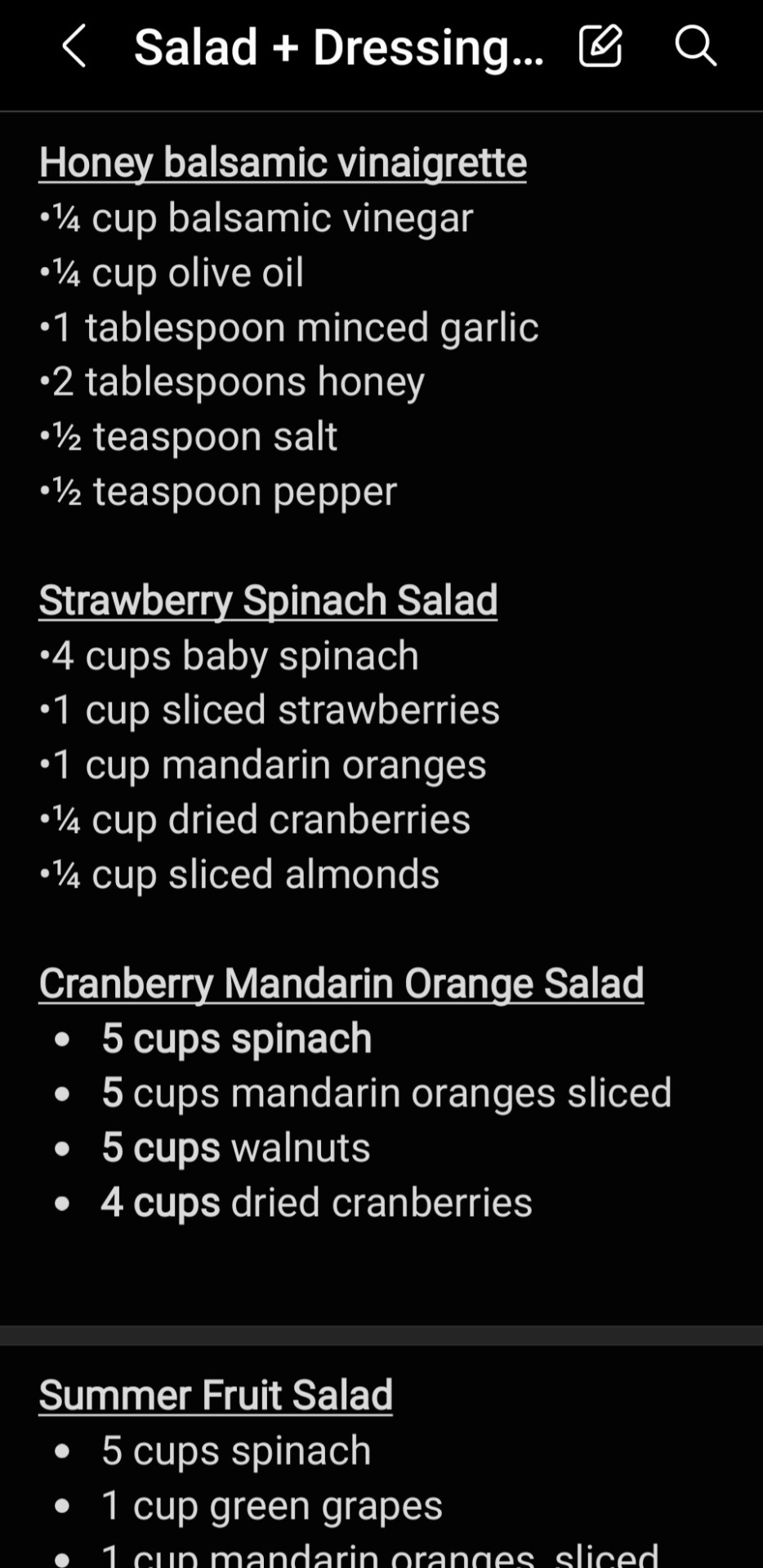
GI issues resolved themselves in a week, I am healthier, lighter, less sluggish, more fit, more in shape and more energetic. This is now my diet 75% of the time (5 days a week).
Decolonize your mind.
You have the ability to heal yourself. Stop running to doctors and quick fixes.
Change what you eat. Move more.
Get outside in nature! You are nature!
That is what heals. We come from nature and we are nature.
Trees, grass, sunlight, air, flowers, butterflies, streams, brooks, meadows, gardens, pumpkin patches, orchard farms, parks, nature trails.
Get outside.
Not to get in your car. Not to go somewhere.
Stop spending all your time penned inside like an animal and a prisoner.
Not to go to the mall, shopping, a restaurant, a salon, a spa, a movie theater, work, school, a grocery store, a laundromat, dry cleaners.
Not to run an errand.
Not to sit in traffic in a machine.
Not to burn calories.
Not to power walk.
Not to lose weight.
To reconnect with nature.
To reconnect your mind, soul, body, heart and spirit.
The west purposely severs this connection in service of capitalism.
Its up to you to restore it.
Walk. Breathe. Be. Skip. Twirl. Pose. Use the sidewalk as a catwalk. Take selfies. Take pictures.
Stop and smell the flowers.
Hug a literal tree.
Lay on the grass while cars roll past you with their windows down and stare at you like youre crazy.
Its 11 am on a Tuesday.
What the hell is she doing laying on the grass with her arms outstretched?
Why isnt she at work or at school?
Confuse people with your very presence.
I have a goth alt kawaii japanese street fashion aesthetic that includes boyshorts, leather garters, torn fishnets, leather chokers, hello kitty tiaras, six inch pink platform heels, black lipstick, mini cut out crop tops, extremely thick black eyeliner and hot pink eyeshadow.
For wearing this on Friday on my daily walk at 8:30 am which I then shared on TikTok, I was accused of being indecent, inappropriate for children to see going to school, people stared, rolled their windows down, honked at me, cars followed me, two men purposefully walked right into me bumping me (there was plenty of room on the sidewalk), an HVAC repairman leered at me outside of his van and literally just stared holes through me as I walked by.
Im 41. Im 5"1. Im 92 lbs. Im black and female.
I have a quirky style and aesthetic. I look young.
I also shaved my head bald a few weeks ago and have a bald fade.
People have since then called me a dyke, asked if I am trans, am I a boy or a girl, whats the deal.
Thats when I dont have a wig on.
I love different looks so I also wear long wigs.
The reaction is completely different when I wear a wig and people tell me how good I look, that people are slowing their cars down because I am attractive.
Bald fade, bony dyke who looks like a boy and might be trans.
Long wig, attractive girl, let me slow down and get a look.
Still black no matter the hair. Still followed.
Still harrassed.
A MAGA Proud Boy harrassed me with my bald fade while I was wearing an Eagles shirt and jeans. He stared at me as I took a selfie on a bench under a tree, when I got up to walk home, he started walking towards me and blocked my path in the small walkway we were both on and wouldnt let me pass.
Doesnt matter if its boy shorts and leather garters or an Eagles shirt and jeans.
I am harrassed for being a carefree black girl in capitalist Amerikkka.
#anti capitalism#green party#cornel west#socialism#environmetalists#tree huggers#nature lovers#heal yourself#plant medicine#herbal medicine#big pharma#gmos#abolish the police#black lives matter#blm#antiracism#lgbtq#transgender#feminism#feminist#patriarchy#third eye#ascension#self actualization#self expression#free spirit#be your true self#home remedies#black girl magic#limitless
80 notes
·
View notes
Text

Spiderweb covered aloe
Spiderweb -
"The Everlasting Cycle of Life: A spider's web serves as a deadly trap for other insects, yet it is also a place where spider eggs hatch, symbolizing the infinite process of death and rebirth, the cycle of life, and the balance between creation and destruction."
Aloe Vera -
"Aloe Vera symbolizes spirituality, good luck, and protection as well as cleansing. It is believed to protect a person from physical accidents and is used to heal minor injuries if they do happen. Drinking Aloe Vera juice is believed to block the influences of evil spirits from harming your body and physical health."
#witchcraft community#witch tips#green witch#kitchen witch#occult#grimoire#divination#plant magic#plant medicine#spiritual knowledge#spiritual meaning#aloe vera#spider web#witch aesthetic#witchy vibes#sigil magic#spirituality#herbal magick#herbal medicine
49 notes
·
View notes
Text

Lady's mantle (Alchemilla vulgaris L ) in Swedish is named Daggkåpa which can be translated to Dew mantle or Dew hood.
Apparently it's healthy and can be used as tea. Never tried it before and I have been told all of them can be eaten but ... idk... if I try I will most likely leave it to a professional to prepare it.
#photography#naturecore#nature#photographers on tumblr#plants#flower#original photographers#flowers#gardening#dew#lady's mantle#herbs#plant medicine#green
23 notes
·
View notes
Text
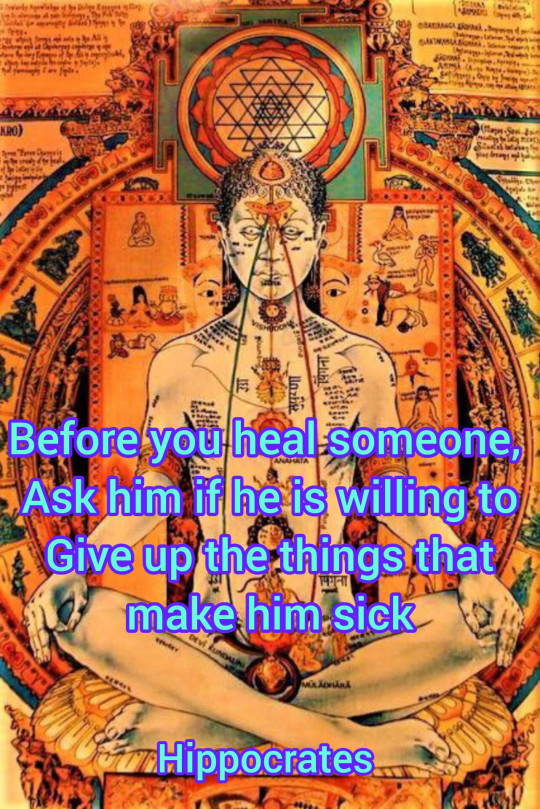
#ayahuasca#plant medicine#psychoactive substances#consciousness#vision#enthogenics#shaman#shamanism#spirituality#hippocrates#medicine plants#plant medicines#medicine#amazonia#quantic healing#self healing#healing#healingjourney
118 notes
·
View notes
Text
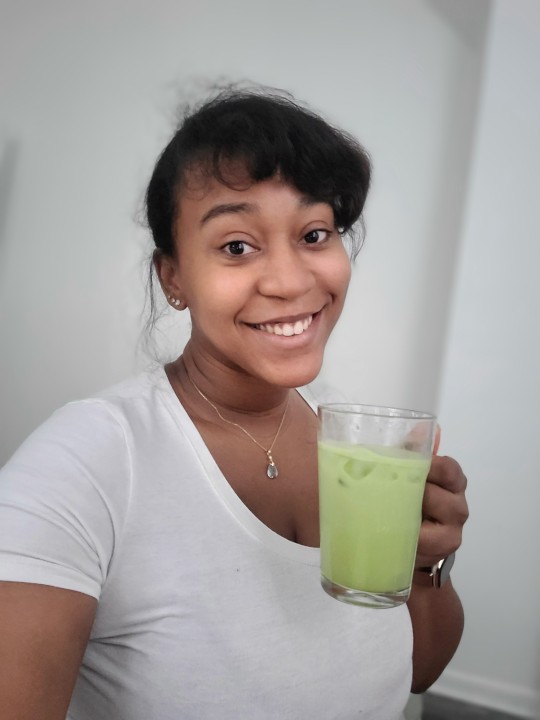
Finally got me some matcha! I needed something for the days when I wanted to give coffee a break. It has so many benefits!
It's high in antioxidants
Help protect the liver
Boosts brain function
Caffeine
Is cardioprotectiveand supports heart function
Increases metabolism and aids in digestion.
So I will probably be drinking this all day 😆
65 notes
·
View notes
Quote
Be smarter every day by listening to your intuition, looking at the world with your forehead. Jump, dance, sing, so that you live happier. Heal yourself, with beautiful love and always remember…You are the medicine.
Maria Sabina
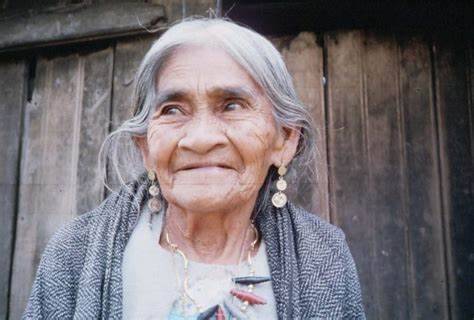
107 notes
·
View notes
Text
Happy shoutout to my childhood self who was always putting some petals, leaves, dirt and stones in a pot making a magic potion. She was right. If she had the knowledge I have now, she would have been over the moon. She only lacked a person to teach her that:
Yarrow mixed with hot water will make a potion against stomach-ache
Lemon balm leaves and pine needles mixed with hot water will make a potion that makes sad and distress go away
Basil leaves mixed with hot water will make a potion against headache
Nettle mixed with hot water will give power, clarity and calcium to the drinker
Mint leaves mixed with hot water will soothe stomach spasms
Linden flowers mixed with hot water will become a cold medicine
Chamomile with hot water makes a sleepy potion
Elderberry flowers mixed with hot water will become a cold medicine
Elderberries if mixed and cooked, powerful anti-flu and anti-cold medicine
Violet leaves mixed with hot water will give anti-fever medicine, and cures sore throat
Blackberry leaves mixed with hot water will make an anti-diarrhea potion
Sage mixed with hot water will help fight bacteria
Rose petals left in cold water in the sun will create sweet-smelling potion that lifts the mood of the drinker
and she’d be so proud to make actual functioning potions. Herbal tea is a witchy power.
#herbalism#medicinal plants#medicinal teas#herbs#self sustainable#self grown medicine#foraged medicine#plant medicine#these are all teas btw#except eldeberry syrup
785 notes
·
View notes